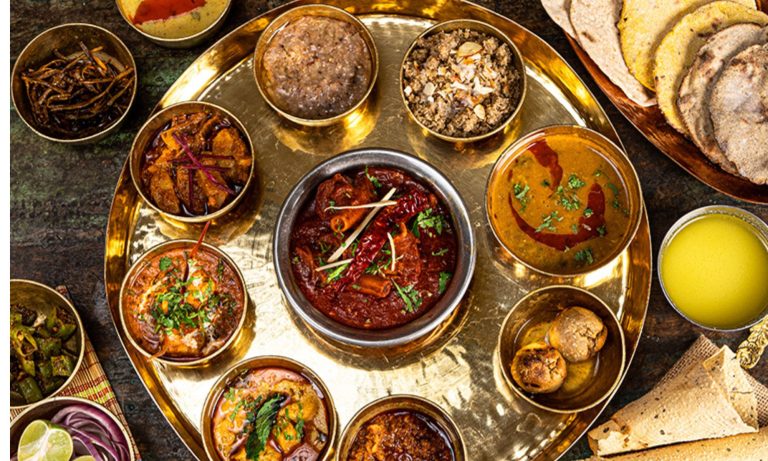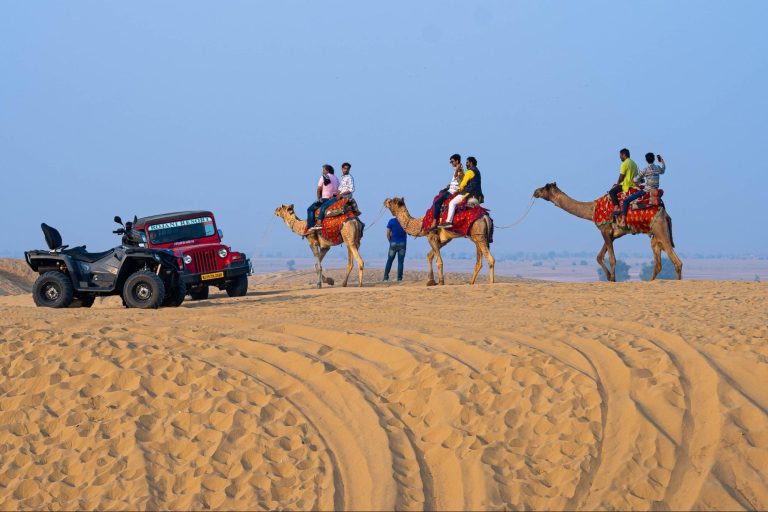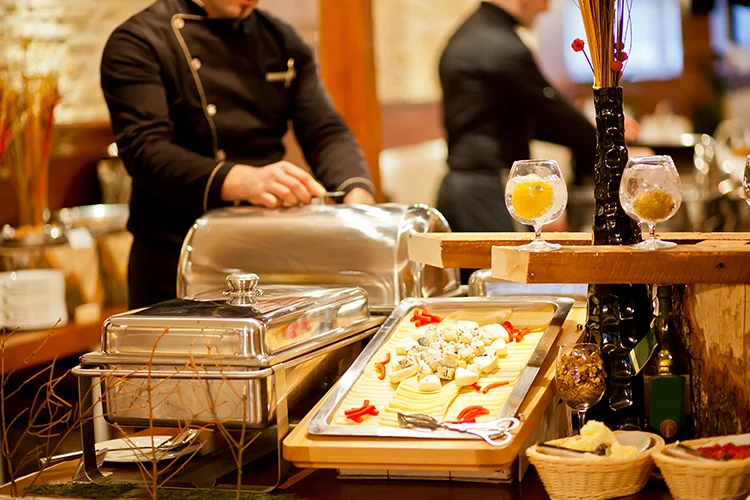Jaisalmer, also known as the “Golden City,” is famous for its rich culture, stunning architecture, and delicious local food. The city offers a variety of mouth-watering dishes, ranging from spicy curries to sweet treats that capture the true essence of Rajasthan. If you are planning a trip to this desert paradise, don’t miss out on trying these amazing dishes that will leave you craving for more.
Dal Baati Churma
Dal Baati Churma is one of the most iconic dishes of Rajasthan, and Jaisalmer serves it in its most authentic form. The dish consists of three components – dal (a mixture of lentils), baati (a baked wheat ball), and churma (a sweetened crushed wheat mixture). The baati is baked in a traditional clay oven and served with ghee, making it rich and flavorful. Dal Baati Churma is not just a meal but a complete culinary experience that brings together different textures and flavors in one bite. Many travelers staying in a Budget Hotel in Jaisalmer often prefer to explore local eateries to savor this delightful dish.
Ker Sangri
Ker Sangri is a unique and traditional dish of Jaisalmer made from dried desert beans (sangri) and berries (ker). This dish is slow-cooked with spices, curd, and ghee, giving it a tangy and spicy flavor. It is often served with bajra roti, which complements the dish perfectly. Ker Sangri is a must-try for anyone looking to taste the authentic flavors of Rajasthan. Many local restaurants near Deluxe Rooms in Jaisalmer offer this dish, allowing visitors to enjoy an authentic culinary experience while exploring the city.
Gatte Ki Sabzi
Gatte Ki Sabzi is another Rajasthani delicacy that you must try when visiting Jaisalmer. The dish is made from gram flour dumplings, known as gatte, which are cooked in a spicy yogurt-based gravy. The soft and flavorful dumplings soaked in the rich gravy create a perfect balance of taste and texture. This dish is best enjoyed with steamed rice or hot rotis. Many travelers who stay at Marvin Jaisalmer often recommend trying this dish at local eateries to experience the true essence of Rajasthan.
Laal Maas
For those who love spicy food, Laal Maas is a treat that should not be missed. This fiery mutton curry is cooked with red chilies, garlic, and a variety of spices, giving it a deep red color and bold flavor. Traditionally, Laal Maas is served with bajra roti or steamed rice. The dish’s spicy and smoky taste makes it a favorite among both locals and tourists. If you are staying in a Budget Hotel in Jaisalmer, don’t hesitate to explore nearby restaurants to savor this mouth-watering dish.
Mutton Saag
Mutton Saag is another delicious mutton dish that blends succulent pieces of meat with a flavorful spinach-based gravy. This dish is rich in spices and offers a unique combination of taste and aroma. It is often enjoyed with naan or bajra roti. Mutton Saag is a favorite among meat lovers who appreciate the fusion of traditional spices and tender meat.
Pyaaz Kachori
Pyaaz Kachori is a popular street food that originated in Rajasthan and has become a favorite snack in Jaisalmer. These deep-fried pastries are stuffed with a spicy onion mixture and served hot with tamarind or mint chutney. The crispy outer layer and the flavorful filling make it a perfect snack for travelers exploring the vibrant streets of Jaisalmer. Tourists staying in Deluxe Rooms in Jaisalmer often enjoy this local delicacy while strolling through the local markets.
Mirchi Bada
Mirchi Bada is another famous street food of Jaisalmer that is loved by spice enthusiasts. Large green chilies are stuffed with a spiced potato mixture, dipped in gram flour batter, and deep-fried to golden perfection. It is served with tangy chutney, making it a delicious and satisfying snack. Many food lovers who stay at Marvin Jaisalmer often explore local food stalls to relish this spicy treat.
Makhania Lassi
After indulging in spicy Rajasthani dishes, a glass of Makhania Lassi is the perfect way to cool down. This rich and creamy yogurt-based drink is topped with saffron and dry fruits, giving it a royal touch. Makhania Lassi is not only refreshing but also provides a soothing contrast to the spicy flavors of other local dishes.
Ghevar
No trip to Jaisalmer is complete without trying Ghevar, a traditional Rajasthani sweet. This disc-shaped dessert is made from flour, soaked in sugar syrup, and garnished with dry fruits and saffron. Ghevar is often enjoyed during festivals and celebrations, but you can find it in local sweet shops throughout the year. It is a perfect dessert to end your culinary journey in Jaisalmer.
Malpua
Malpua is another popular sweet treat in Jaisalmer that is enjoyed by locals and tourists alike. These deep-fried pancakes are made from flour, milk, and sugar and are served with a drizzle of sugar syrup. Malpua is often paired with rabri, a thickened sweetened milk, making it a delightful dessert that satisfies the sweet tooth.
Conclusion
Jaisalmer is a paradise for food lovers, offering a perfect blend of spicy, tangy, and sweet flavors that reflect the vibrant culture of Rajasthan. From the richness of Dal Baati Churma to the sweetness of Ghevar, every dish in Jaisalmer has a story to tell. Whether you are staying in a Budget Hotel in Jaisalmer or enjoying the comfort of Deluxe Rooms in Jaisalmer, don’t miss the opportunity to explore these local delicacies and make your trip truly memorable. Enjoy your culinary journey in the Golden City and savor the flavors that make Jaisalmer a food lover’s dream.









